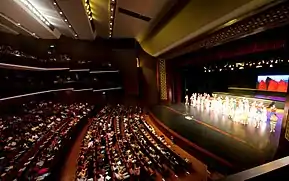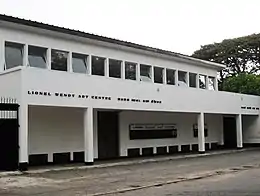Theatre of Sri Lanka
Theatre of Sri Lanka originated from traditional rituals and folk dramas in the 19th century. Until that period, the art was confined to small villages and didn't have a national presence. Influential dramatist Ediriweera Sarachchandra attributes this to the influence of Theravada Buddhism, which he believes to have "tended more toward solitary contemplation and the attainment of insight than towards congregational practices or participation in community life."

History
Early forms

Dramas in Sri Lanka began first with ritualist performances of early polytheistic religions. Originating as masked dances intersnouring gods and ridding demons, these gradually became free of religion and organised forms of entertainment.
These early dramas w With the arrival of Europeans and urbanisation, the Sinhalese began to view theatre as a serious and secular art. At first, urban dramas were derivative borrowing heavily from English drama, or from Parsi theatre musicals (nurti) and Bombay and South Indian operatic plays (nadagam). These catered to a small audience, and drew the ire of strict Buddhists who considered them worthless. They were further attacked by the development of a "Protestant" Buddhism, a revival of the religion that stressed strict adherence to its law. Therefore, the words kolam and nadagam took a connotation of something ridiculous or nonsense in Sinhala.
It would take until the 1950s for serious Sinhala dramas to develop. With independence of Ceylon from Great Britain and a widespread appreciation of Sinhala culture, Ediriweera Sarachchandra led the movement for serious Sinhala theatre. Sarachchandra's work, which brought together elements of the early folk ritual and dance drama tradition with Western theatre methods and stage style, created a new genre of theatre that appealed to all classes.
Major Venues
Major theatres in Sri Lanka include King George Hall (KGH) of the University of Colombo; Navarangahala of the Royal College, Colombo; Elphinstone Theatre and the Nelum Pokuna Mahinda Rajapaksa Theatre. The Lionel Wendt Art Centre and the Nelung Arts Centre combines live theatre and art exhibition, with exhibition galleries and theatres.
References